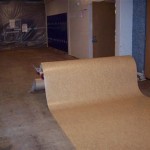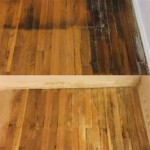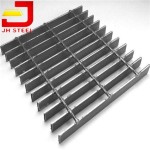Installing Laminate Flooring on Uneven Existing Floors in a House
Installing laminate flooring can dramatically enhance the aesthetic appeal of a room while providing a durable and easy-to-clean surface. However, achieving a seamless and professional-looking installation requires a smooth and even subfloor. Unfortunately, many existing floors, particularly older homes, often suffer from unevenness, creating challenges for laminate installation. This article explores the process of installing laminate flooring on uneven existing floors, providing a practical guide for homeowners tackling this common challenge.
Assessing the Existing Floor
The first step to installing laminate flooring on an uneven floor is to assess the severity of the unevenness. This involves identifying high and low spots, determining the degree of unevenness and the overall condition of the subfloor. A simple level or straight edge can help identify high and low areas. If the unevenness is minor, such as a few millimeters, it may be possible to use a laminate flooring underlayment to compensate. However, if the unevenness is significant, exceeding a quarter-inch, more extensive floor leveling techniques are necessary.
Floor Leveling Solutions
Several floor leveling methods can address unevenness in existing floors. The most common options include:
1. Self-Leveling Concrete
Self-leveling concrete is ideal for larger areas with significant unevenness. This liquid concrete solution is poured onto the existing floor and self-levels, creating a smooth and even surface. Self-leveling concrete comes in various thicknesses and is suitable for both wood and concrete subfloors. However, this method requires proper preparation, including cleaning and priming the subfloor, and may require professional installation.
2. Thinset Mortar
Thinset mortar is a cementitious mixture that can be used to fill in gaps and uneven areas on the subfloor. It is typically used for smaller areas with minor unevenness. Thinset mortar is applied in a thin layer and requires careful leveling before the laminate flooring is installed. This method is less expensive than self-leveling concrete but may require more labor and time.
3. Plywood Underlayment
Plywood underlayment is a common solution for uneven subfloors and is suitable for both smaller and larger areas. This involves laying sheets of plywood on top of the existing subfloor, securing them with screws or nails. Plywood underlayment can effectively level out unevenness and provide a smooth surface for laminate installation. However, it is important to ensure that the plywood sheets are properly fastened and leveled.
Preparing the Subfloor for Laminate Installation
Once the unevenness has been addressed, it is essential to prepare the subfloor for laminate installation. This preparation involves several steps, including:
1. Cleaning the Subfloor
Thoroughly clean the subfloor, removing any dirt, debris, dust, and loose materials. Ensure that the surface is completely dry before proceeding. Any remaining dirt or moisture can affect the adhesion of the laminate flooring and lead to problems later. This may involve using a broom, vacuum cleaner or a damp cloth to remove debris.
2. Sealing the Subfloor
If the subfloor is made of concrete, sealing it with a moisture-resistant sealant is recommended to prevent moisture from penetrating the laminate flooring. This sealant helps to create a barrier between the concrete and the flooring. However, before applying any sealant, it is important to consult with a professional to ensure proper selection and application.
3. Installing Underlayment
Underlayment plays a crucial role in creating a more comfortable and quieter environment for laminate flooring. It also helps to absorb sound, provide insulation and protect the laminate from scratches and impacts. Underlayment should be installed properly, with no gaps or wrinkles, to ensure optimal performance. It is available in various materials, including foam, cork, and felt, with each offering unique benefits. It is recommended to select an underlayment suitable for laminate flooring and the specific subfloor conditions.
Installing the Laminate Flooring
Once the subfloor is properly prepared, the laminate flooring can be installed. Most laminate flooring manufacturers provide detailed instructions on how to install their products. These instructions will guide you through the process, from installing the first row to cutting and laying the final panels. It is important to follow these instructions carefully to ensure a professional and durable installation.
Conclusion
Installing laminate flooring on uneven existing floors involves careful assessment, proper leveling techniques and thorough subfloor preparation. By following the steps outlined above, homeowners can successfully create a smooth and even surface for their laminate flooring installation, achieving a beautiful and long-lasting finish.

Laminate Flooring Tip Uneven Subfloor

Say Goodbye To Uneven Floors With This Easy Transition Trick

Common Mistakes When Laying Laminate Flooring Next Day Floors

The Flooring Solutions That Will Work Best With An Uneven Subfloor

Can We Install Laminate Flooring On An Uneven Floor Singapore

Laying New Wood Flooring Over Original Uneven Floorboards Le Arthur Wells

What To Do When Floors Are Diffe Heights Vinyl Plank Installation

How To Install Laminate Flooring The Home Depot

Iheart Organizing Do It Yourself Floating Laminate Floor Installation

Floor Levelling Explained An Expert Guide Craftedforlife
Related Posts








